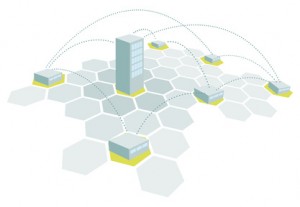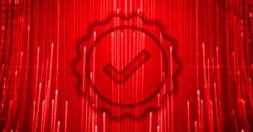 The choice of a distributed architecture for an organization is usually determined by the business requirement to support its remote office base at the same level as its main office. Branch offices broaden the reach of the business and are usually a sign of successful business growth. However once the decision to expand with branch offices has been taken, these offices instantly increase the responsibility of the IT/Network Manager who has to ensure that local branch assets including networking devices, such as routers, switches, WAN optimizers, firewalls and any distributed applications and servers for transactions and email are all correctly installed and maintained. The IT/Network Manager must ensure that these remote devices are integrated into the central network management and Authentication, Authorization and Accounting (AAA) systems for appropriate management and security.
The choice of a distributed architecture for an organization is usually determined by the business requirement to support its remote office base at the same level as its main office. Branch offices broaden the reach of the business and are usually a sign of successful business growth. However once the decision to expand with branch offices has been taken, these offices instantly increase the responsibility of the IT/Network Manager who has to ensure that local branch assets including networking devices, such as routers, switches, WAN optimizers, firewalls and any distributed applications and servers for transactions and email are all correctly installed and maintained. The IT/Network Manager must ensure that these remote devices are integrated into the central network management and Authentication, Authorization and Accounting (AAA) systems for appropriate management and security.
A distributed network involves many, many different components and increases the vulnerability of service disruptions due to the lack of technically trained personnel at the branch office and geographic isolation from the central support staff. The IT/Network Manager needs a framework for implementing and managing these components, monitoring their status and ensuring they are performing effectively from a central location. Remote access is absolutely critical in a distributed enterprise.
The common denominator of most branch office IT deployments is network connectivity, which typically requires a router, switch and firewall. If these components fail in a remote location, then business will suffer. Centralized management of the branch office is imperative, especially from the viewpoint of the branch office since ideally it means that there is nothing to do! No need for local support personnel and no responsibility if the local devices have a problem. For the IT/Network Manager, on the other hand, having tens, or even hundreds of locations to manage can be a daunting task. A central view of, and access to the local assets is needed to remotely address troubleshooting challenges. Not all branch offices are necessarily deployed using exactly the same devices as the main office, it is essential that a centralized management solution can support a wide breadth of devices, as well as advanced security and authorization capabilities This is critical to ensure enterprise security standards are maintained and downtime minimized.
Most networking equipment has serial interfaces, and in-band tools like Telnet are common methods of accessing and maintaining these devices. Unfortunately, if there is a problem with the network then these access tools might well be useless. Remote access using out-of-band management to servers, WAN equipment, networking gear and power control devices enables the IT/Network Manager to maintain and manage these devices, and monitoring of devices ongoing is vital to ensure that problems can be identified and fixed as quickly as possible. With remote monitoring many problems may be identified, and resolved, before they begin to effect local traffic. With out-of- band management the IT/Network Manager can provide modem or cellular access if the WAN is unavailable, which can prevent a trip to the remote location and speed repair time.
It only takes one mistake when an IT/Network Manager can’t connect through the network, and doesn’t have out-of-band management, for there to be a major network issue. The IT/Network Manager would ended up having to send someone to the site, access the server and restart it. A problem that should have taken five minutes to fix could become the cause of major network downtime, increased cost and unhappy customers.


